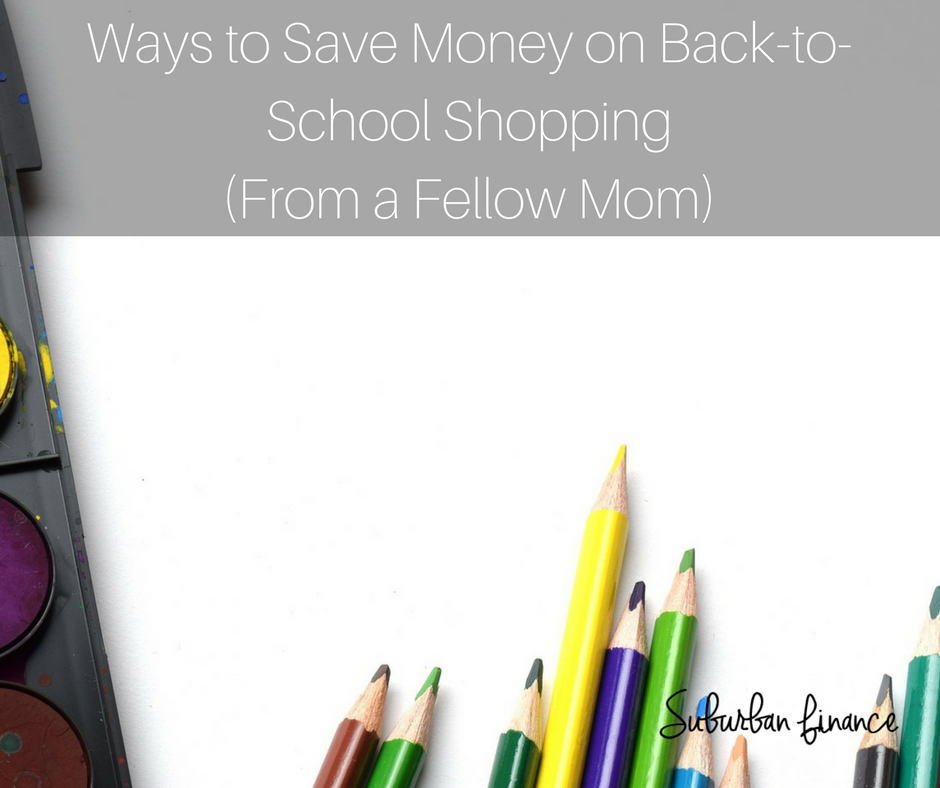It’s hard to believe, but Back-to-School season is already here. The evenings are slowly starting to get shorter again, vacation time is just about all used up, and planning for school is in motion at full-speed ahead. Whether your student is preparing for college or kindergarten, back-to-school shoppers will spend roughly $688 per household this year, with 64% spent on electronics and apparel, the National Retail Federation (NRF) states. In fact, results show in the NRF’s annual survey that the combined 2017 spending for college and primary education will be $83.6 billion, a 10% increase from last year. While overwhelming, there are actually plenty of ways to save on back-to-school shopping. Below are just a few from a fellow mom:
Ways to Save on Back-to-School Shopping
Tips from a Fellow Mom:
I spoke with my good friend Krista, who currently lives in Philadelphia, to find out how she saves on back-to-school shopping. She and her husband just bought a new house, so I know she is definitely not trying to spend $600 on supplies.
“[Even before the house], when it comes to saving money, I’m all about it. It’s my passion,” she joked. “Back to school shopping is more than just pencils and a new lunch box – it spans to include shoes, jackets, a new haircut, and more. Add that to activity and sports fees, field trips, etc. and sending your child back to school became a bigger cost than budgeted.”
So, going beyond the coupons and sales, here are some ways she saves that you can try as well:
1. “Know where you will shop and buy a gift card,” she advises. “Do you always shop at a particular store for clothing? Perhaps you love Kohls or TJ Maxx for back to school clothing. If you are going to a particular place to shop, you can save up to 20% off by purchasing a gift card ahead of time. Check out Raise.com for discounted gift cards that have a money-back guarantee. You have the peace of mind knowing the gift card is authentic and the savings in your wallet. Combine these savings with a coupon code or cashback site if you’re shopping online, and you can save up to 35-40%.”
Now, that’s a deal.
2. Another simple way that Krista saves money? Signing up for loyalty programs and email lists. This especially comes in handy when your child needs a back-to-school eye exam, haircut, or even a physical.
“In the last week, I have received 4 offers for free back to school kid haircuts and an offer for a free eye exam. This saves us extra money and exposes us to a new business that we will likely go back to in the future.”
3. Ask yourself, does it need to be new? Krista raises the point that kids grow out of clothing, shoes, sports equipment, and so on so fast that sometimes they don’t even wear what we bought.
“You can save upwards of 75% retail by shopping children’s consignment sales,” she said. “There may be many in your area coming up for the fall. A quick Google search can put you in touch with savings opportunities around the corner.”
Some General Tips:
In general, there are other ways to save on back-to-school shopping, especially for those headed to college. Here are a few:
- Make a List: Make a list of what you need, then, before you even think about shopping, do an inventory check of what you already have. By cross-checking your lists of needs and haves, you’ll avoid spending money you did not need to spend.
- Determine a Budget (And Stick With It): Once your list is made, create a budget for your back-to-school shopping and stick with it. Don’t allow trends or unnecessary product features affect you spending goals.
- Go online: Regardless of age, there are many savings to be had by shopping online. A great site to find textbooks cheaper is textbooks.com. You can purchase hard copies or electronic versions as well as sell books to other people.
- Save By Waiting: If you’re a procrastinator when it comes to shopping, you’ll actually be able to benefit by this trait in some ways. Pencils, notebooks, and even fall clothes will all be cheaper at the end of August and beginning of September. The cost of clothes can certainly add up, so waiting for deals before you splurge will be a great money-saving tactic for which your bank account will thank you.
- Buy in Bulk: While buying in bulk is not always great for grocery shopping, it is when it comes to school supplies such as those notebooks and binders. These are items your student will likely need next year, too, so save money by stocking up ahead of time.
When you put your mind to it, you’ll find some really creative ways to save on back-to-school shopping. What tips would you add to the list that have worked for you?
Jenn Clark is a writer, PR specialist, entrepreneur, blogger and coffee enthusiast. A lover of laughter, traveling and cheese, she’s written about her life experiences here at suburbanfinance while at the same time growing other young professionals. You can find more of her work at Jennblogs.co.



